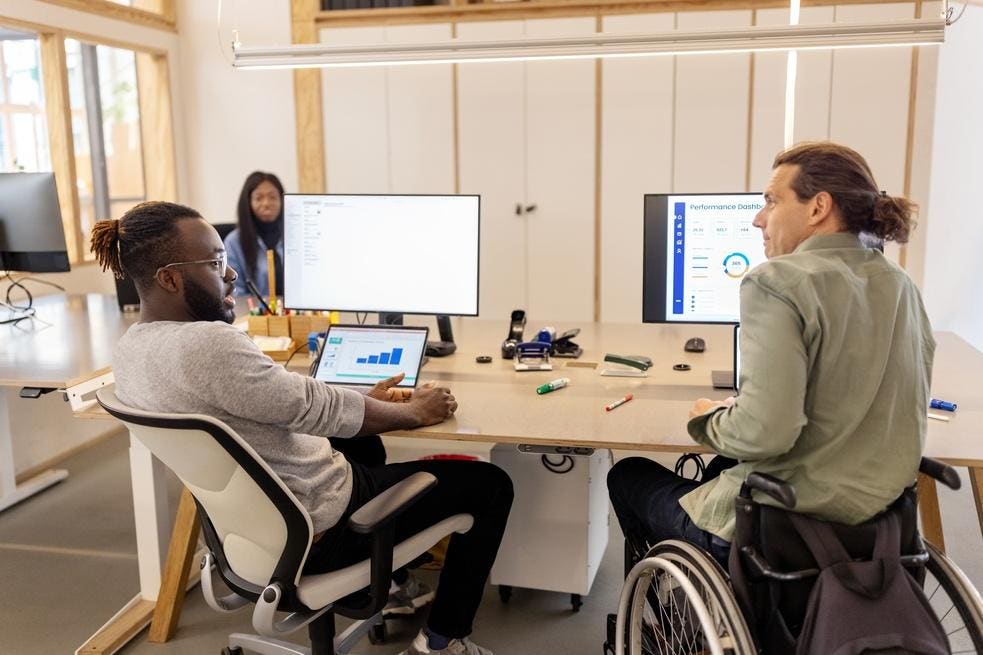Tyler Weitzman, cofounder, President and Head of AI at Speechify.
The WHO estimates that more than 2.5 billion disabled people will need one or more assistive technologies in 2030. Yet almost a billion of them can’t access these products. Considering how globalization is increasing, this means we are denying an entire community from enjoying the same services as everyone else.
As AI systems have grown in popularity and complexity, however, we are seeing more AI-powered solutions that can help people with mental, physical, visual or hearing impairments perform tasks, both everyday and complex. I believe that by making AI technologies more widely accessible, many businesses can change the lives of individuals with disabilities. Here are four ways businesses using AI technology can empower (or are already empowering) individuals with disabilities.
1. Easing Communication
AI voice technologies, such as Siri, Alexa and Echo, help make communication easier for people with impairments. These programs can describe text and images to people with visual disabilities, and text-to-speech (or vice versa) technologies can help those with brain injuries communicate or understand things more easily. One such app is Google’s Parrotron, an AI tool that enables speech-impaired individuals to translate their distorted speech patterns into fluent conversations.
Businesses can utilize these AI tools to create a more inclusive and collaborative work culture that includes employees regardless of their disabilities. By providing these individuals with effective speech transcription tools, business leaders can help them participate equally in collaborative settings and share ideas across departments and teams.
Businesses can also use AI-powered voice technology to improve their customer support. For instance, AI chatbots can help your customer service teams communicate with customers with disabilities, understand their needs more readily, and fulfill them more effectively. This helps create better experiences, which can ultimately lead to higher customer loyalty.
2. Learning Opportunities
Everyone should be able to avail of any service regardless of their disabilities. AI technology can help ensure this inclusivity. For example, just like subtitles let people with hearing impairments understand a movie, braille helps visually impaired individuals read. You can now find AI-powered braille tutor apps on the internet that assist disabled individuals in learning braille and accessing education at different levels. These apps use optical character recognition (OCR) to transform physical braille characters into digital text.
Business leaders can leverage AI-powered solutions to create a continuous learning and development culture. For example, you can implement personalized learning paths to help employees find relevant training courses and materials according to their skills. Moreover, you can use AI tools to provide continuous feedback to employees based on their performance to help them learn from their mistakes.
Leaders can also use AI tools to identify skill gaps within the company, learn about an employee’s competencies, and develop targeted training programs to promote upskilling opportunities. There are even options available for using virtual reality (VR) and augmented reality (AR) to offer interactive learning experiences to employees.
I believe it is imperative for businesses to provide employees with disabilities with personalized learning experiences that help them acquire the skills and knowledge needed to succeed in their daily roles. This creates a diverse workforce that empowers everyone. With the proper implementation, businesses can foster a growth-focused mindset in their workforce without discrimination, eventually boosting the bottom line.
3. Promoting An Independent Lifestyle
AI is opening doors for disabled individuals to live independent personal and professional lifestyles. For example, many AI programs help businesses create effective and efficient workflows with virtual assistants like Google Assistant or Amazon Alexa, which can schedule meetings, set reminders and automate many voice tasks. Business leaders can also integrate AI-powered chatbots into different work-related apps to assist employees in different tasks. Microsoft Bing’s integration with Skype is one such example: You can simply ask a question from Bing on Skype, and it will provide an answer immediately.
Other AI tools that can ease workflow include robotic process automation (RPA), which can automate repetitive tasks; AI-integrated recommendation systems, which can be used to retrieve personalized suggestions from data; and AI computer vision applications, which can identify and interpret visual data through object detection, image recognition, facial recognition and quality control. Businesses can also benefit from AI-integrated cybersecurity tools to detect threats proactively and eliminate them in real time.
By utilizing these tools, every employee—including those with disabilities—can streamline manual tasks and free up time to focus on more critical work. This can also help leaders attract and retain diverse talent unhindered by the barriers they might otherwise face.
4. Connection To The Outside World
In this fast-paced, globalized world, it’s as important as ever for people to feel connected with each other. Fortunately, AI technology has introduced new ways to help people with disabilities feel linked to their surroundings. For example, Microsoft’s Cortana can assist visually impaired individuals in navigating their devices through voice control. Programs like RogerVoice and Ava utilize AI to transcribe group conversations for those with hearing impairments, including punctuation, the sender’s name and important words from the user’s dictionary.
Businesses can employ these AI-powered virtual assistants to help disabled individuals attend and schedule meetings, answer emails and collaborate with others like everyone else. Translation tools are also available to assist employees who speak different languages in communicating with each other.
Inclusion Regardless Of Ability
People with disabilities have the same right to enjoy life and succeed at their professional goals as everyone else. They should be empowered to work independently, communicate across teams and learn new skills. Fortunately, AI has been helping business leaders enhance accessibility and inclusivity in their workplaces. Consider how you can incorporate some of these tools in your workplace, not only to give your current employees more paths to success but also to attract and retain a talented and diverse employee pool.
Forbes Business Council is the foremost growth and networking organization for business owners and leaders. Do I qualify?
Read the full article here










